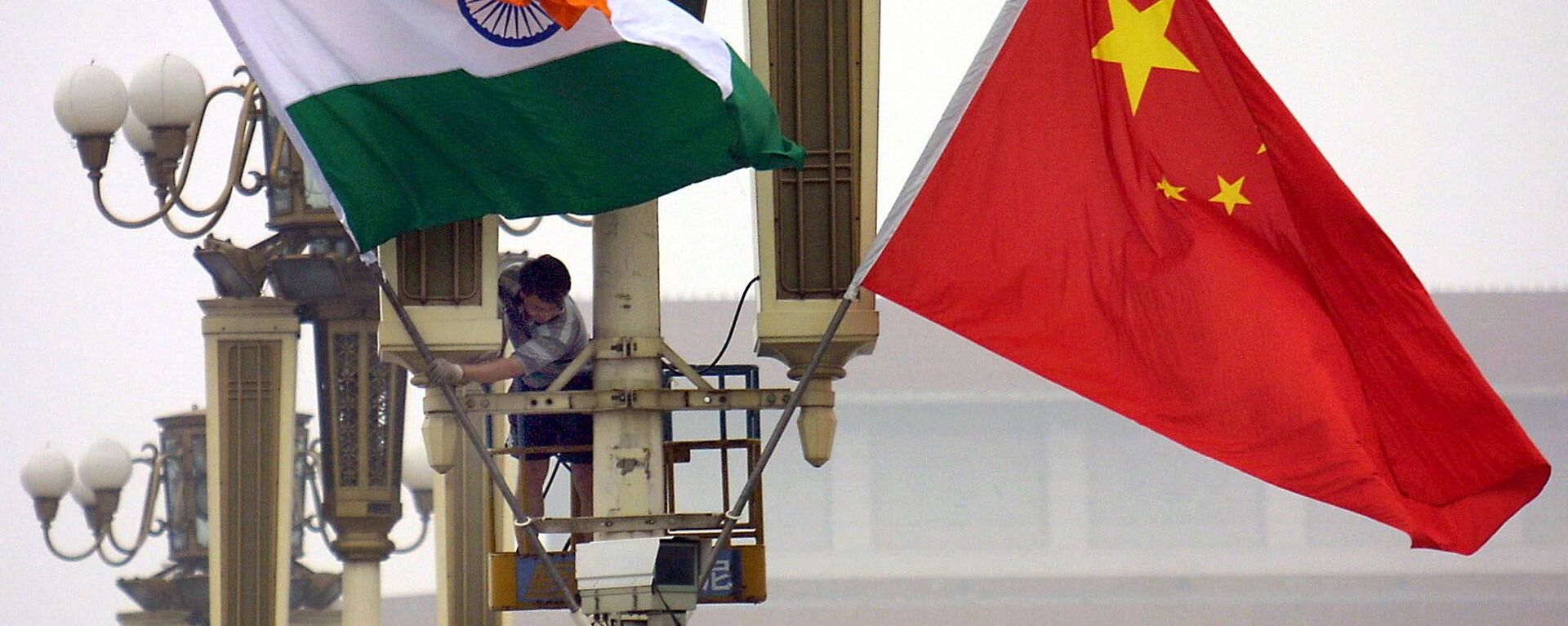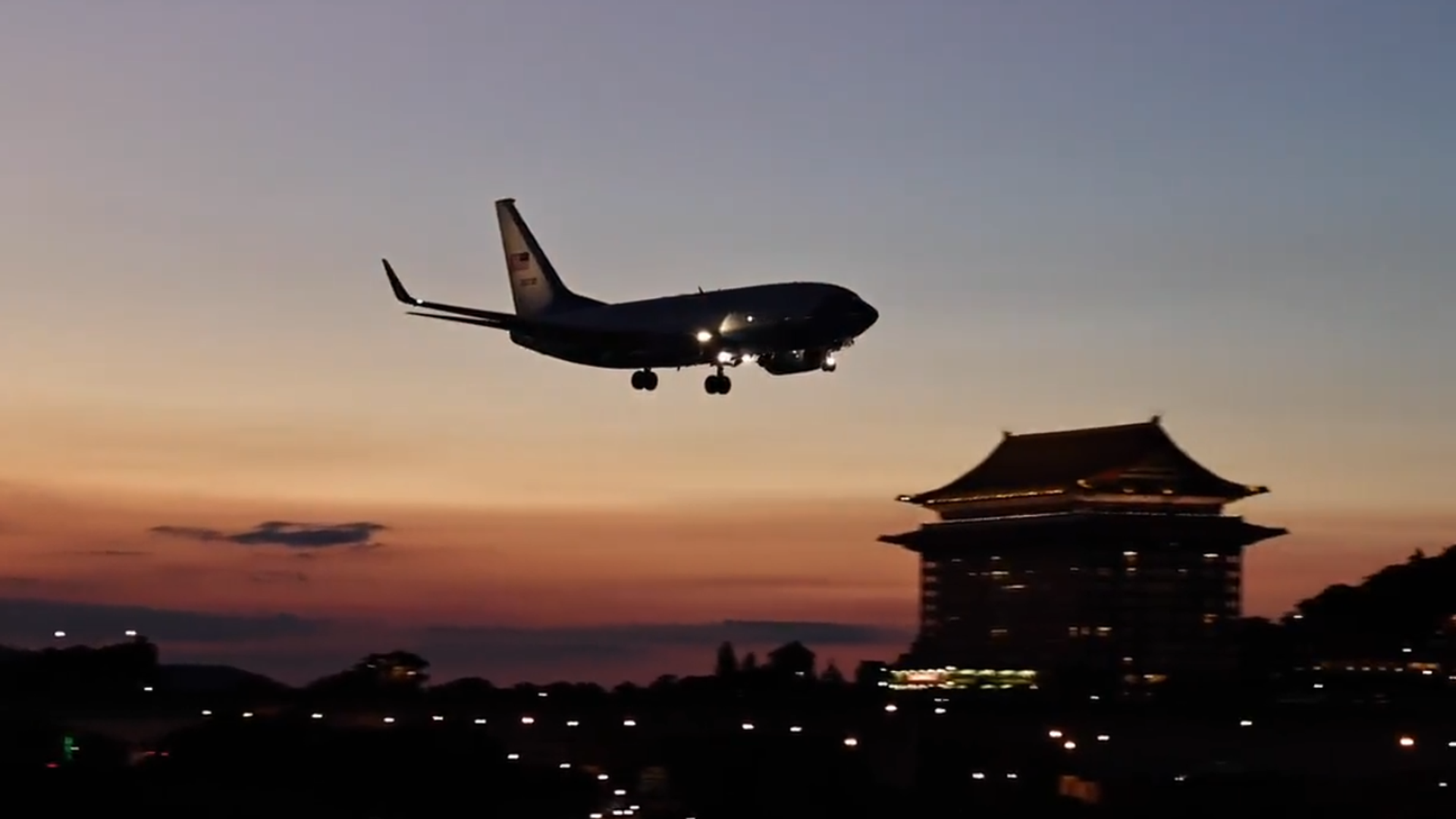https://sputnikglobe.com/20220902/expert-weighs-in-do-taiwan-strait-tensions-impact-on-india-china-border-dispute-1100310960.html
Expert Weighs In: Do Taiwan Strait Tensions Impact on India-China Border Dispute?
Expert Weighs In: Do Taiwan Strait Tensions Impact on India-China Border Dispute?
Sputnik International
US Navy chief Admiral Mike Gilday said that India presents China with a “major two-front problem” last week in the backdrop of escalating tensions in the... 02.09.2022, Sputnik International
2022-09-02T14:55+0000
2022-09-02T14:55+0000
2023-06-19T12:45+0000
india
china
analysis
ladakh standoff
indian army
one china policy
taiwan
https://cdn1.img.sputnikglobe.com/img/07e6/08/0e/1099578382_18:0:1401:778_1920x0_80_0_0_5c90e5c45eed276bede10edcd2d7453d.png
The “escalation dynamics” of the Ladakh border dispute will be controlled by India alone, a former Indian Army general has told Sputnik. His comments came in response to a question if military tensions in the Taiwan Strait will have any bearing on the Ladakh border dispute between China and India.He said that India remained committed to defending its territorial interests in the current border standoff, and that there is a “resolution” to the dispute which involves China’s People's Liberation Army (PLA) returning to its pre-April 2020 positions.The former general argued that resolving the Ladakh border dispute is a “long-term game” and a complicated process.“They (the Chinese PLA) walk into areas they feel is theirs, while we also walk into areas we feel are ours,” the Indian military veteran said, while clarifying that India is in no way looking for an “escalation” of the dispute.Thousands of Indian and Chinese troops, as well as advanced weapons systems, have been deployed in the eastern Ladakh border region since May 2020 after Delhi accused Beijing of encroaching upon territory perceived by it to fall under its jurisdiction.Sixteen rounds of military commander-level talks have led to some disengagement of troops at three friction points, including the north and south banks of Pangong Tso as well as Gogra. The Indian and Chinese troops are engaged in a tense standoff in two other areas — Hot Springs and Depsang Plains. The dispute escalated into deadly clashes between the two militaries in the Galwan Valley in June 2020, leading to the deaths of 20 Indian and five PLA troops.However, he warned that India will respond with equal measure in a “strategic and military sense” if the PLA’s “aggression” at the Ladakh border becomes “unbearable”.He said that India will “continue to respond to every move by the PLA”, including building infrastructure on Indian side of the border in response to Beijing upgrading its military infrastructure on its side of Line of Actual Control (LAC).According to Asthana, the Indian Navy has an “upper hand” vis-à-vis the PLA in the Indian Ocean owing to geographical proximity.He described the Indian Ocean region, including the Strait of Hormuz as well as the Malacca Strait, as being crucial to China given that around 40 per cent of its energy is imported from west Asia. Asthana also reiterated that it is entirely up to India to choose how it reacts in case there is another episode of deadly clashes like the ones that took place in Galwan Valley.India’s Policy Towards TaiwanAsthana further reckoned that India’s Foreign Ministry’s official response expressing concern over the PLA’s live-fire and ballistic missile drills around Taiwan was “in line with the longstanding official policy”.He opined that India’s "reluctance of late" to acknowledge the One-China policy in the official communiqués showed Delhi’s “flexibility” with regard to its stance towards Taiwan.Delhi was one of the backers of 1971 UN Resolution 2758, which was passed to restore Beijing its “lawful seat” at the General Assembly.Asthana recalled that former Indian Foreign Minister Sushma Swaraj later asked Beijing to respect the "One-India Policy" if it wanted the Indian government to commit to the One-China principal.The Indian government has said that overall ties with Beijing have been “profoundly disturbed” because of the clashes in Galwan Valley, the deadliest in border episode in around four decades.Indian Foreign Minister S. Jaishankar has urged Beijing to work towards restoring the status quo at the Ladakh border, as it existed before April 2020, saying that the “state of the border will reflect the state of India-China relations”.
https://sputnikglobe.com/20220830/india-china-differences-undermine-the-rise-of-asia-foreign-minister-s-jaishankar-says-1100146074.html
china
ladakh standoff
taiwan
Sputnik International
feedback@sputniknews.com
+74956456601
MIA „Rosiya Segodnya“
2022
News
en_EN
Sputnik International
feedback@sputniknews.com
+74956456601
MIA „Rosiya Segodnya“
Sputnik International
feedback@sputniknews.com
+74956456601
MIA „Rosiya Segodnya“
india, china, analysis, ladakh standoff, indian army, one china policy, taiwan
india, china, analysis, ladakh standoff, indian army, one china policy, taiwan
Expert Weighs In: Do Taiwan Strait Tensions Impact on India-China Border Dispute?
14:55 GMT 02.09.2022 (Updated: 12:45 GMT 19.06.2023) Exclusive
US Navy chief Admiral Mike Gilday said that India presents China with a “major two-front problem” last week in the backdrop of escalating tensions in the Taiwan Strait, after US House Speaker Nancy Pelosi’s provocative trip to the island.
The “escalation dynamics” of the Ladakh border dispute will be controlled by India alone, a former Indian Army general has told Sputnik. His comments came in response to a question if
military tensions in the Taiwan Strait will have any bearing on the Ladakh border dispute between China and India.
“We don’t need the interference of any power and we don’t want to be told as to what to do,” stated retired Major-General Shashi Bhushan Asthana, referring to India’s official policy regarding mediation in its border dispute with Beijing. Delhi has previously rejected US ex-President Donald Trump's offer to mediate.
He said that India remained committed to defending its territorial interests in the current border standoff, and that there is a “resolution” to the dispute which involves China’s People's Liberation Army (PLA) returning to its pre-April 2020 positions.
The former general argued that resolving the Ladakh border dispute is a “long-term game” and a complicated process.
“There is no written border agreement between India and China,” he underlined, adding that the 1914-era Simla Pact between the former British imperialist government in India and the then-Tibetan rulers has been rejected by the Chinese Communist Party that came to power in 1949.
“They (the Chinese PLA) walk into areas they feel is theirs, while we also walk into areas we feel are ours,” the Indian military veteran said, while clarifying that India is in no way looking for an “escalation” of the dispute.
Thousands of Indian and Chinese troops, as well as advanced weapons systems, have been deployed in the eastern Ladakh border region since May 2020 after Delhi accused Beijing of encroaching upon territory perceived by it to fall under its jurisdiction.
Sixteen rounds of military commander-level talks have led to some disengagement of troops at three friction points, including the north and south banks of Pangong Tso as well as Gogra.
The Indian and Chinese troops are engaged in a tense standoff in two other areas — Hot Springs and Depsang Plains. The dispute escalated into deadly clashes between the two militaries in the Galwan Valley in June 2020, leading to the deaths of 20 Indian and five PLA troops.
“We are certainly not going to go to a war because of the border dispute with China,” Asthana stated.
However, he warned that India will respond with equal measure in a “strategic and military sense” if the PLA’s “aggression” at the Ladakh border becomes “unbearable”.
He said that India will “continue to respond to every move by the PLA”, including building infrastructure on Indian side of the border in response to Beijing upgrading its military infrastructure on its side of Line of Actual Control (LAC).
“If their aggression becomes unbearable, then India will always have to operate at multiple fronts, including militarily at the border as well as stepping up the Indian Navy presence in the Indian Ocean region,” the military analyst reckoned.

30 August 2022, 06:10 GMT
According to Asthana, the Indian Navy
has an “upper hand” vis-à-vis the PLA in the Indian Ocean owing to geographical proximity.
He described the Indian Ocean region, including the Strait of Hormuz as well as the Malacca Strait, as being crucial to China given that around 40 per cent of its energy is imported from west Asia. Asthana also reiterated that it is entirely up to India to choose how it reacts in case there is another episode of deadly clashes like the ones that took place in Galwan Valley.
India’s Policy Towards Taiwan
Asthana further reckoned that India’s Foreign Ministry’s official response expressing concern over the PLA’s live-fire and ballistic missile drills around Taiwan was “in line with the longstanding official policy”.
“India firmly believes that military posturing is not the answer to any dispute,” he said.
He opined that India’s "reluctance of late" to acknowledge the One-China policy in the official communiqués showed Delhi’s “flexibility” with regard to its stance towards Taiwan.
Delhi was one of the backers of 1971 UN Resolution 2758, which was passed to restore Beijing its “lawful seat” at the General Assembly.
Asthana recalled that former Indian Foreign Minister Sushma Swaraj later asked Beijing to
respect the "One-India Policy" if it wanted the Indian government to commit to the One-China principal.
“India doesn’t contradict the One-China principal, but our policy has been more assertive as far as adhering to the One-China principal,” Asthana said, as he referred to the attendance of Indian MPs at the swearing-in ceremony of Taiwanese leader Tsai Ing-Wen in May 2020.
The Indian government has said that overall ties with Beijing have been “profoundly disturbed” because of the clashes in Galwan Valley, the deadliest in border episode in around four decades.
Indian Foreign Minister S. Jaishankar has
urged Beijing to work towards restoring the status quo at the Ladakh border, as it existed before April 2020, saying that the “state of the border will reflect the state of India-China relations”.




